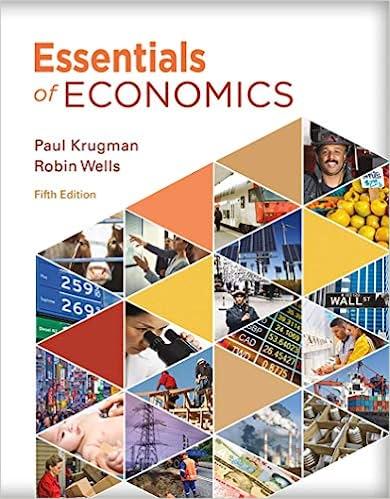Created in 2009 by two young entrepreneurs, Garrett Camp and Travis Kalanick, Uber was designed to alleviate
Question:
Created in 2009 by two young entrepreneurs, Garrett Camp and Travis Kalanick, Uber was designed to alleviate a common frustration: how to find a taxi when there aren’t any available. In a densely populated city like New York, finding a taxi is relatively easy on most days—stand on a corner, stick out your arm, and before long a taxi will stop to pick you up.
And you know exactly what taxi fare rates will be before you step into the car, because they are set by city regulators.
But at other times, it is not so easy to find a taxi, and you can wait a very long time for one—
for example, on rainy days or during rush hour. As you wait, you will probably notice empty taxis passing you by—drivers who have quit working for the day and are headed home.
Moreover, there are times when it is simply impossible to hail a taxi—such as during a snowstorm or on New Year’s Eve.
Uber was created to address this problem. Using an app, Uber connects people who want a ride to drivers with cars. It also registers drivers, sets fares, and automatically collects payment from a registered rider’s credit card. Uber then keeps 25% of the fare, with the rest going to the driver. As of 2018, Uber was operating in 85 countries and in more than 903 cities, and booked $12 billion in rides.
In New York City, Uber fares are roughly comparable to regular taxi fares during normal driving hours. The qualification during normal driving hours is important because at other times Uber’s rates fluctuate. When there are more people looking for a ride than cars available, Uber uses what it calls surge pricing: setting the rate higher until everyone who wants a car at the going price can get one. For example, during a snowstorm or on New Year’s Eve, Uber rides cost around 9 to 10 times the standard price. Enraged, some Uber customers have accused it of price gouging.
But according to Kalanick, Uber’s surge pricing is simply a method of keeping customers happy because the surge price is calculated to leave as few people as possible without a ride. As he explains, “We do not own cars nor do we employ drivers. Higher prices are required to get cars on the road and keep them on the road during the busiest times.”
However, with more drivers joining Uber’s fleet, drivers are finding that it takes longer hours to make sufficient income. So in cities where passengers have limited access to taxi services, Uber drivers have banded together to take “synchronized breaks” during peak hours, such as Saturday nights. These breaks cause prices to surge, which prompts the drivers to jump into their cars. Clearly these Uber drivers know how supply and demand works.
Questions:-
1. What accounts for the fact that before Uber’s arrival, there were typically enough taxis available for everyone who wanted one on good weather days, but not enough available on bad weather days?
2. How does Uber’s surge pricing solve the problem? Assess Kalanick’s claim that the price is set to leave as few people as possible without a ride.
3. Use a supply and demand diagram to illustrate how Uber drivers can cause prices to surge by taking coordinated breaks. Why is this strategy unlikely to work in New York, a large city with an established fleet of taxis?
Step by Step Answer:






